During my afternoon stroll along the foreshore of Fort Adams yesterday I noticed the Alofsin Basin was filling up with boats preparing to sail in the New York Yacht Club Race week. There were two brands of boats: J 109’s and Beneteau 36.7’s. While I was waiting under a tent for a thunder storm to roll by, I was gazing at each build of boat and was struck by some of the differences and some of the similarities.
Given that the boats are more or less the same size, with the same general purpose and are Name Brands, after the blow subsided, I wandered around the docks and took these pictures of some of the details and I record my thoughts on same.
The 109 is of course a sprit boat thus it does not need a fore guy for the pole whereas the Beneteau is set up for symmetrical kites.
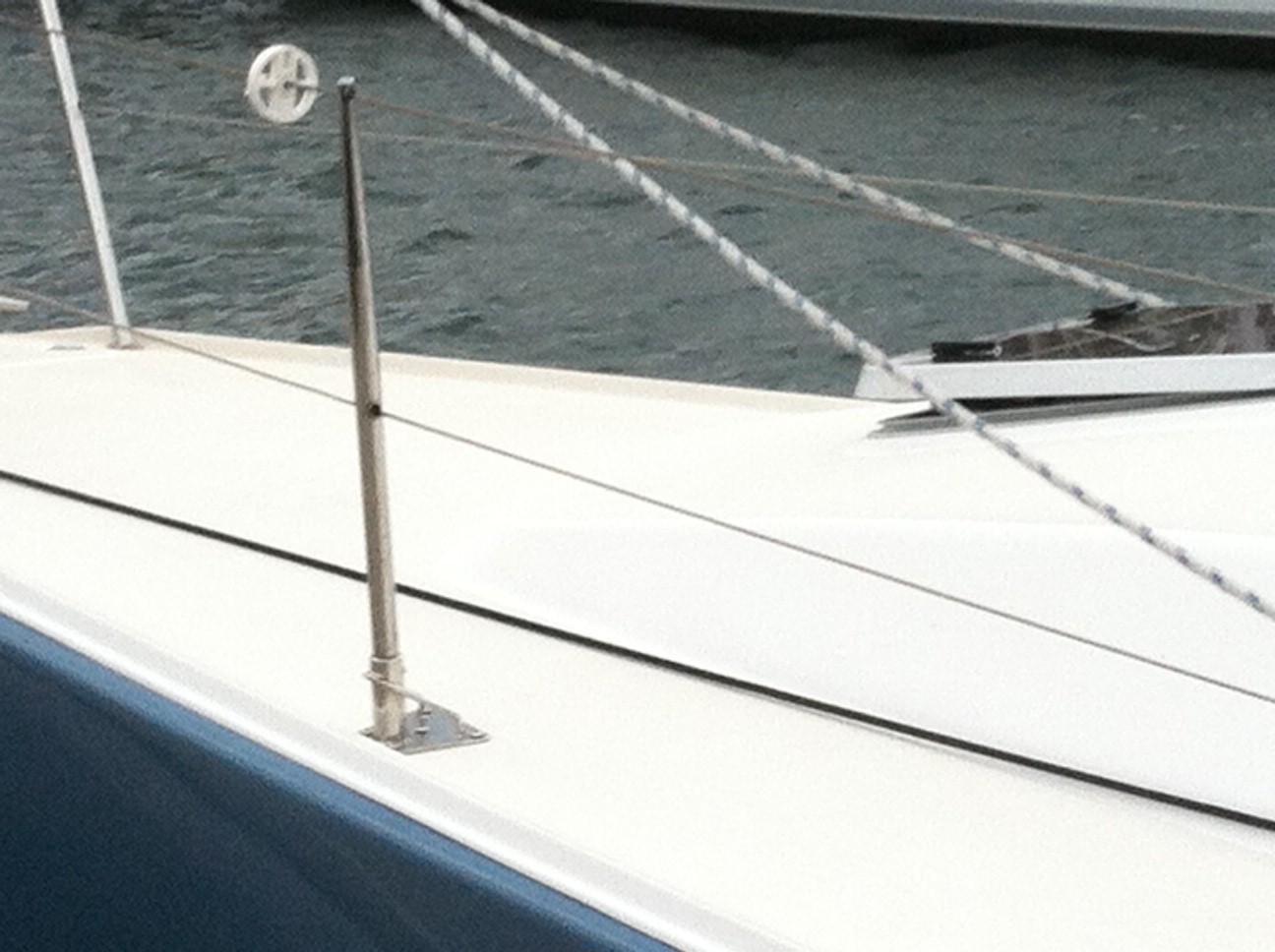
The J109 has a relatively uncluttered foredeck, with no (visible) rigging for the pole/sprit, although the tack line has to lead somewhere and the hatch is set aft on the cabin.

The Beneteau has the hatch on the foredeck and this boat uses a double ended foreguy leading aft on either side of the spar.
The J109 is nominally mast head with only about 18″ above of mast above the top of the headstay connection. This is typically for the spinnaker sock to live. The Beneteau is more of a fractional rig, with perhaps 3-4 feet (by eyeball) of spar above the jib-stay/mast connection. These two seemingly slight differences lead to different backstay adjustment systems.

The Beneteau has a multi-part tackle for backstay adjustment. It is very cunningly lead forward to either side of the binnacle thence to cleats that the mainsheet trimmer can adjust from his regular perch. It seems like the BS position might give a hand hold to a swimmer returning aboard too. And there is space on top of the rudder post for placing a life raft should one sail where one is needed.
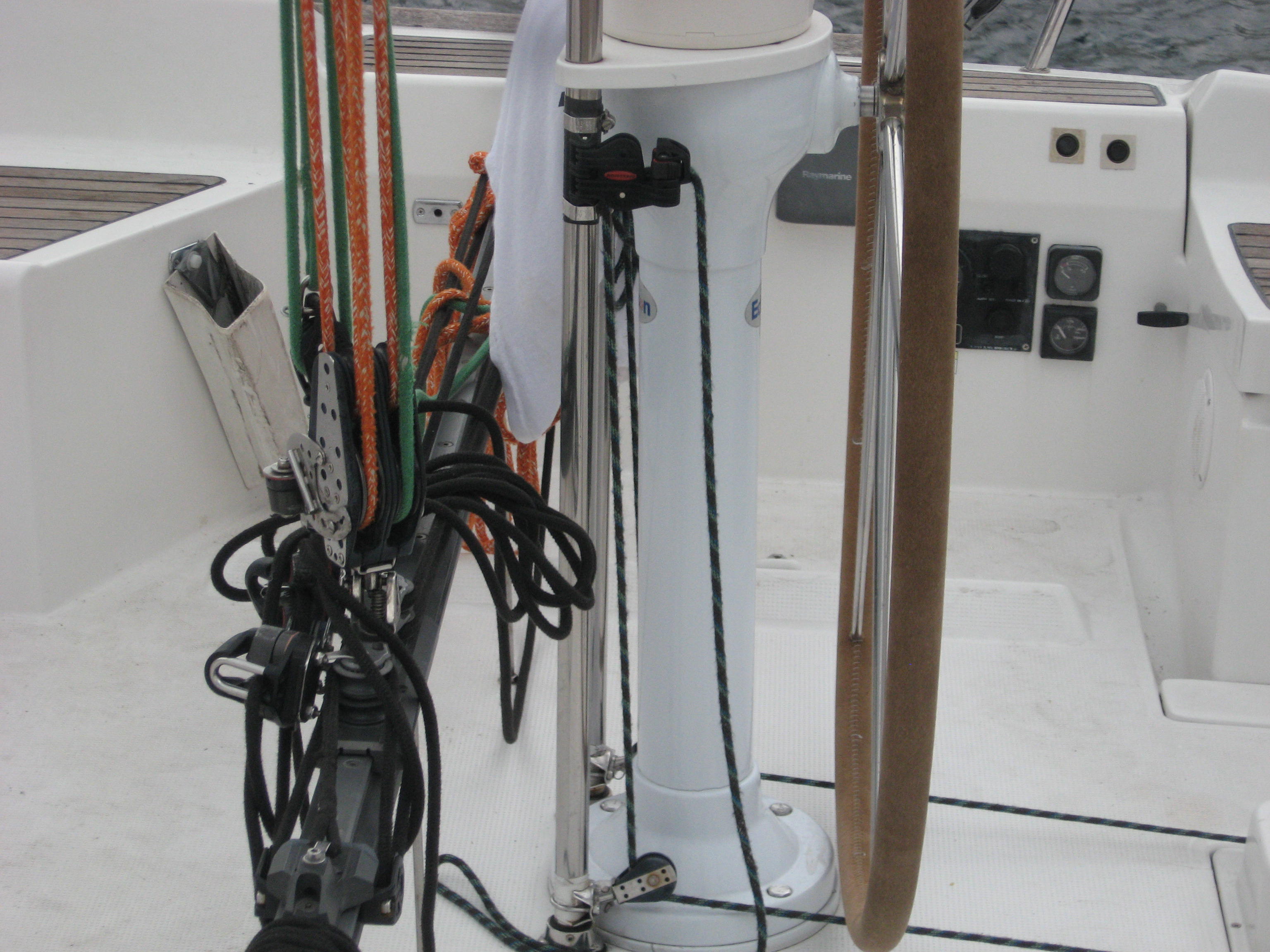
The two ends of the tackle are led forward to the base of the binnacle then up to matching cam cleats and so positioned that the main sheet trimmer can easily adjust them from his normal perch-thus not disturbing anything. At least on this boat.
The J-109 has a more or less conventional integral hydraulic adjustment. Similar to the J 105 so the closest person to adjust it is thus the guy steering.

The integral hydraulic adjuster for the J-109 is positioned behind the driver. It too can be used as a hand hold by returning swimmers. There is ample space aft of the helmsman for placing a raft too as circumstances dictate.
Both boats have double spreader rigs.On the J109, the D2’s, are continuous and so terminate at the deck.

The D2’s on the 109 are adjustable from the deck, a convenient feature for sailing (racing) in disparate locations, so it is easy to adjust the rig settings for light, medium or hard air.
The black wrappings are not the usual black electrical tape but rather cotter pins attached to Velcro so the pins can be pulled instantly with no tools and the rig adjusted, quickly, between races even, if the crew is up to it.
On the Beneteau though, the rigging is dis-contiuous and so the terminals for the rigging are aloft making between races adjustment a bit more of a chore. The deck terminal looks like this.

Beneteau 36.7 chainplate terminals are on deck and so require a crew member to go aloft to adjust the rigging, but this leaves a smother, cleaner bottom end of the rigging on deck. This boat uses another trick of race boats. The elimination of the cotter pins altogether by tying the two barrel screws together.
Not only are the boats from different builders and have different ideas about spinnakers but they also use different hardware.
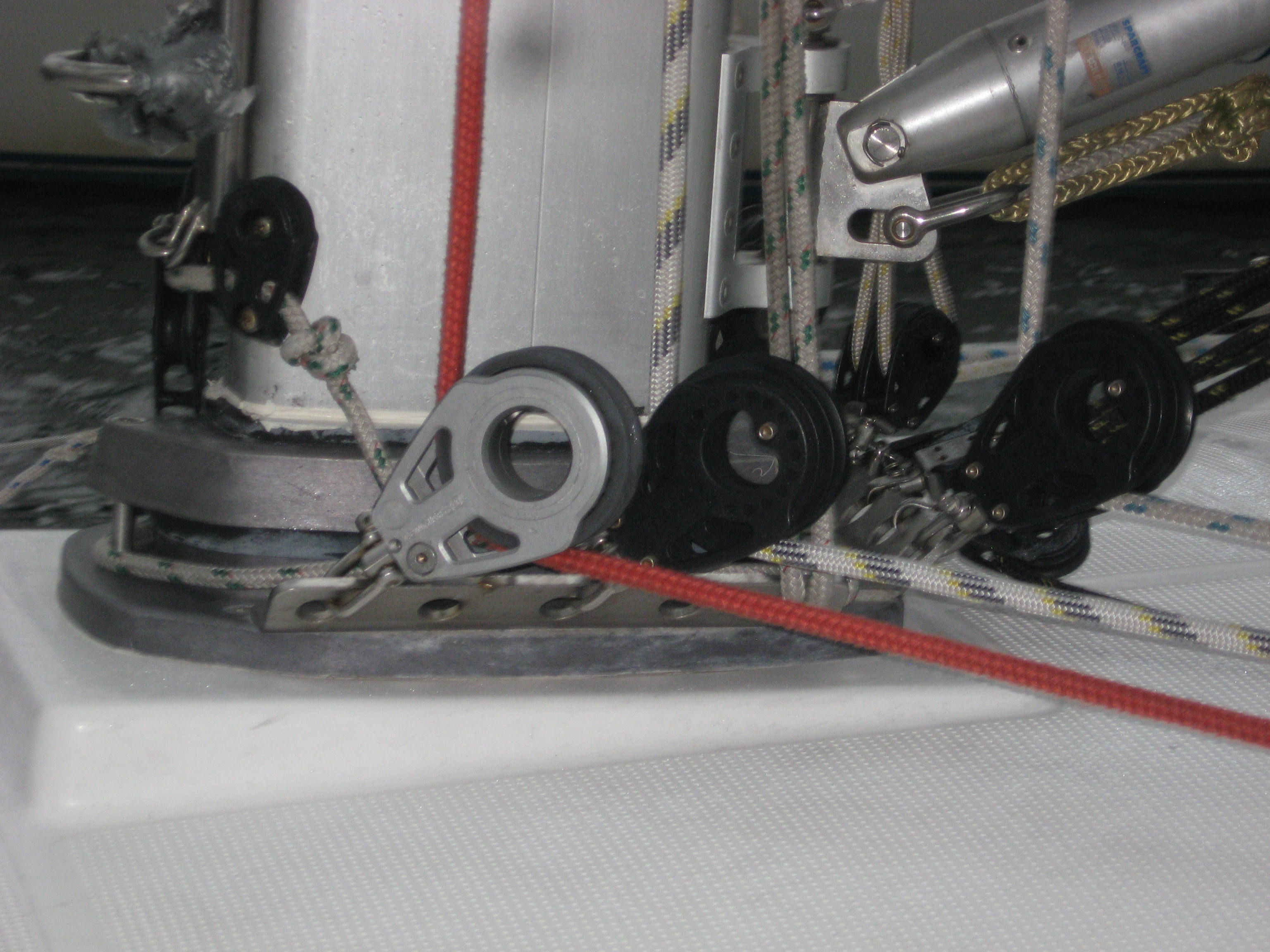
The Lewmar blocks at the base of the Beneteau spar are connected with shackles. While this makes easy to get them on and off, it does leave open the possibility of the blocks falling over during operations. I have seen halyards get hockles (kinks) this way and also chafed thru the plastic sides of one block when it fell over. Contemplate also the molded in non-skid tred on the Beneteau.
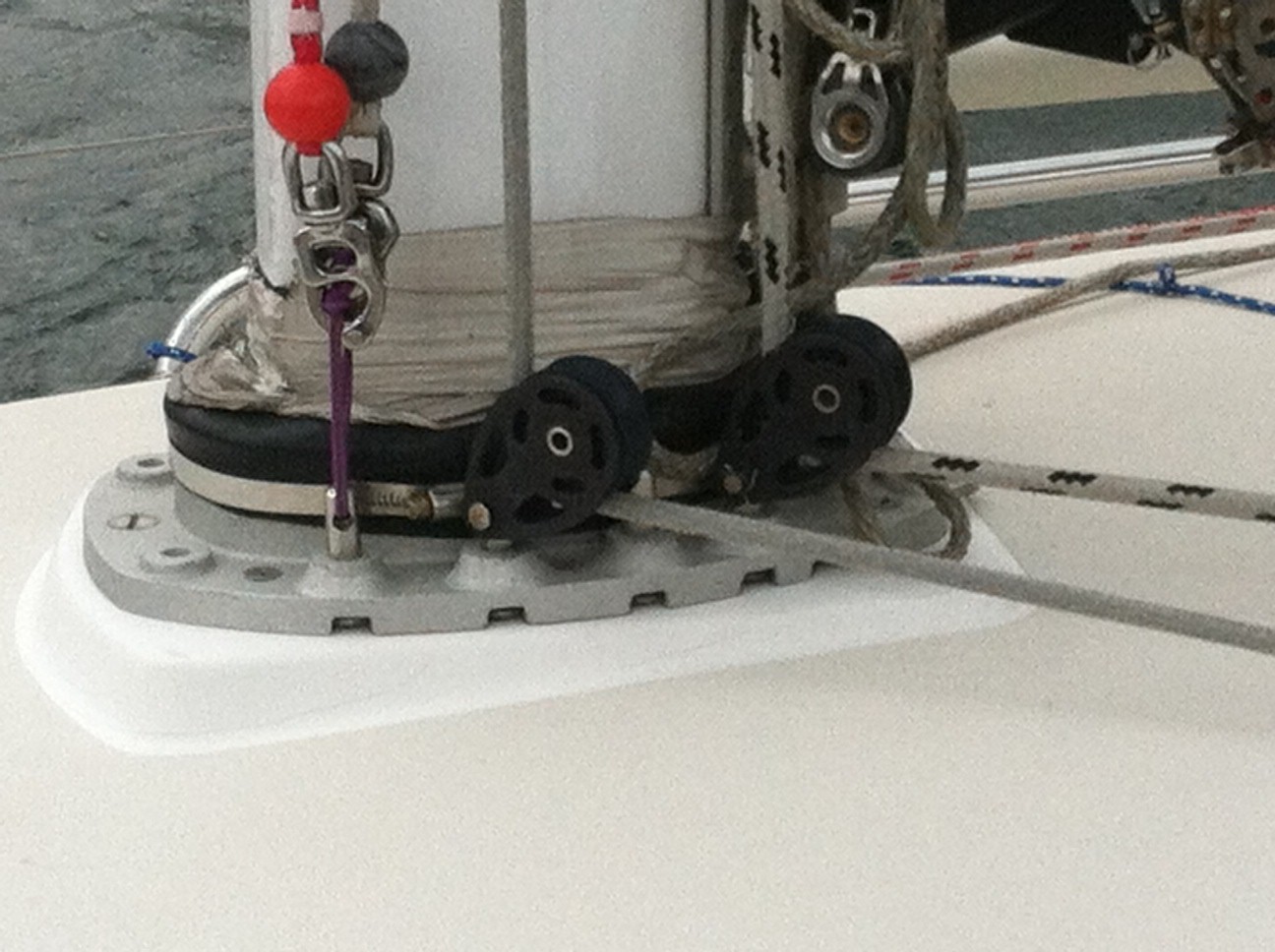
The J109 mast blocks are secured to the deck/collar ring by short studs (the spare one on the left holds 2 halyards) thus keeping them vertical at all times. The non skid seems to be painted on on this boat. Interesting the differences in the mast collars since the spars both come from the same company even though they may have different brand names.
The Genoa lead cars are both ball bearing adjustable, but on the 109 the tackle was 4:1
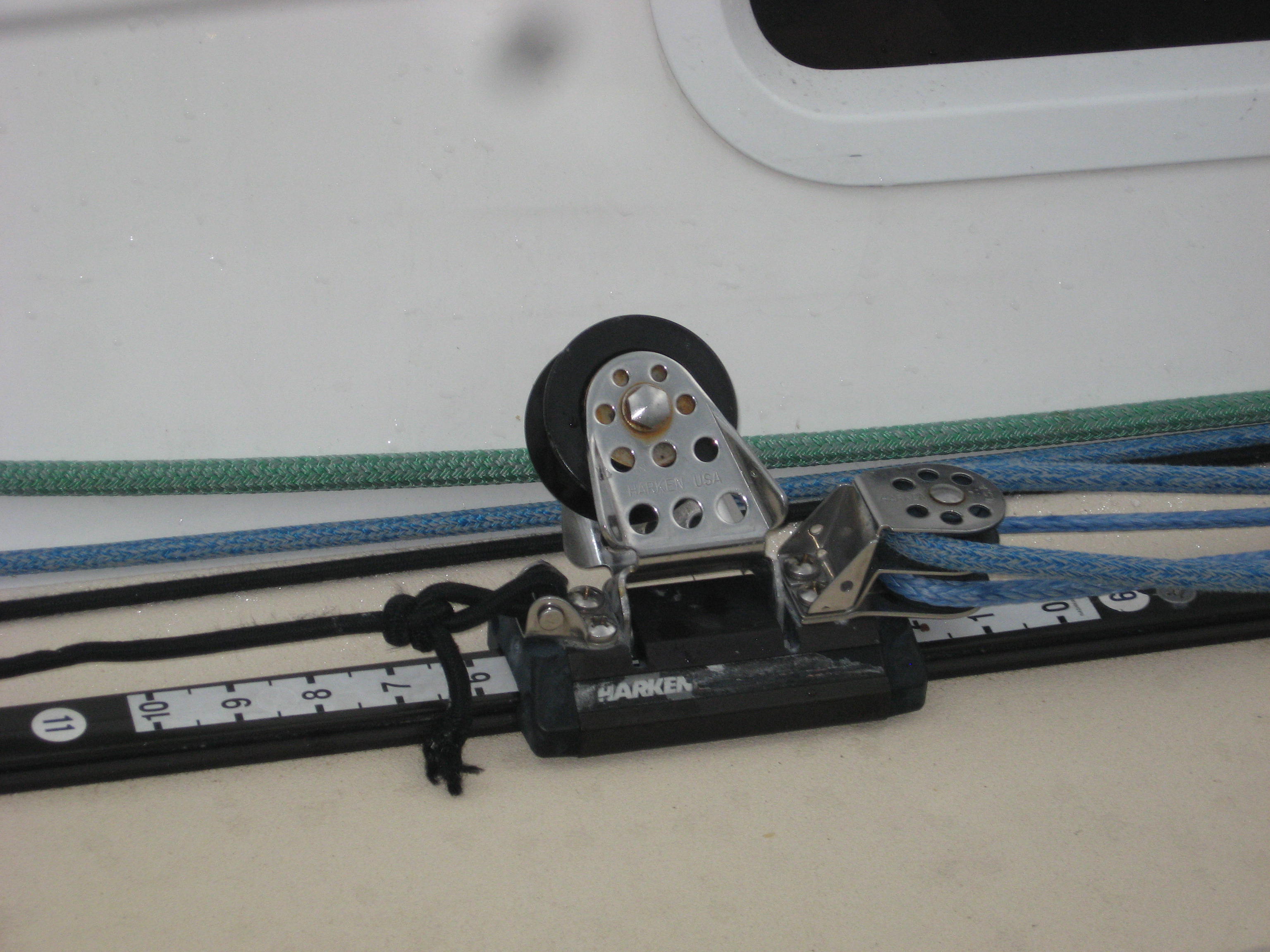
This particular J109 has a 4:1 tackle for moving the car. The care tows forward to the right in the picture.
The Beneteau has a 3:1
The mainsheet travelers are also different.
And on the Beneteau, it straddles the cockpit higher up.
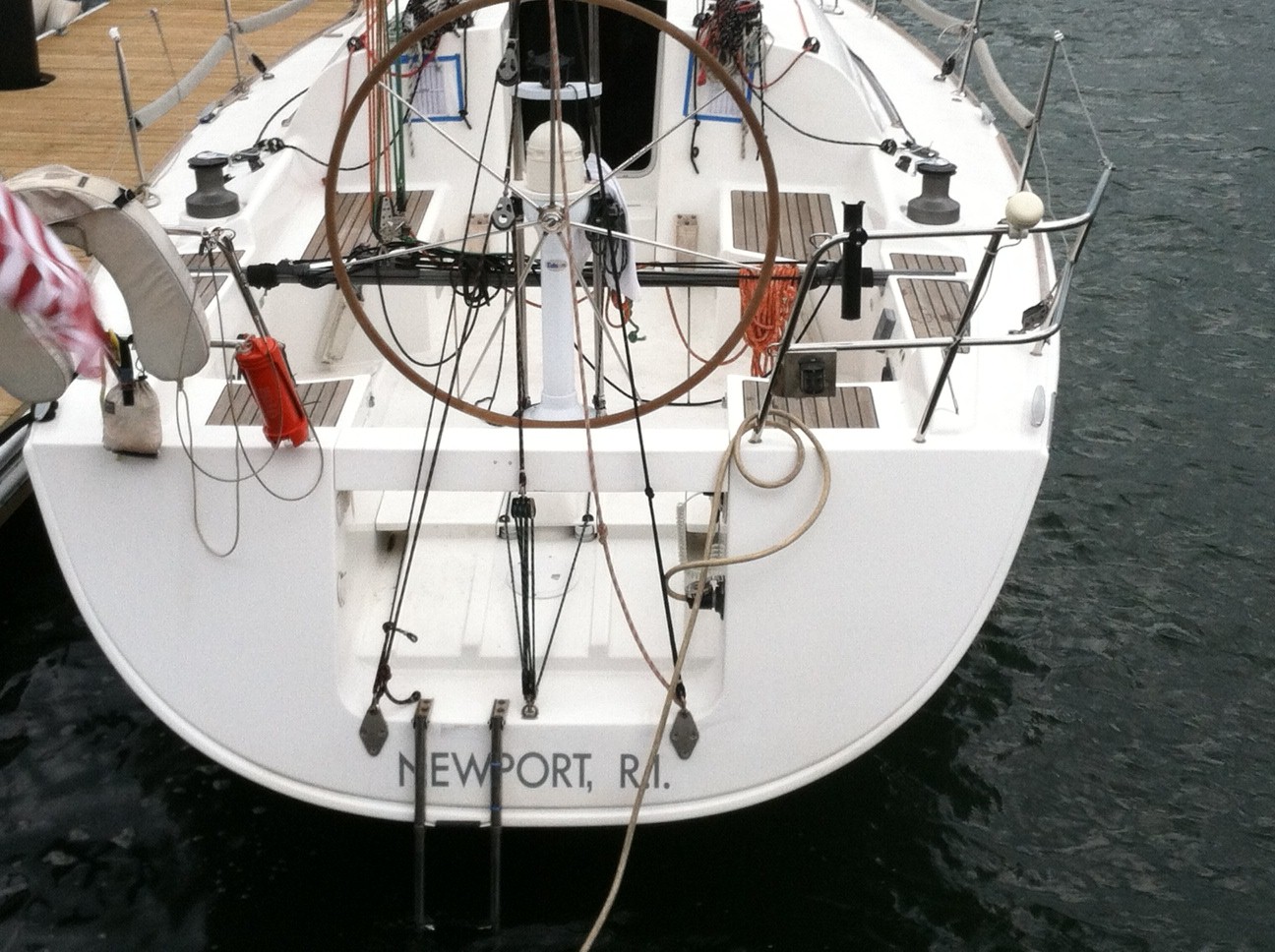
The traveler on the Beneteau is placed on the coamings, making it, I imagine, a bit harder to scramble over to steer, swim or get to the back of the bus.
I found these details interesting. I hope you did too.



